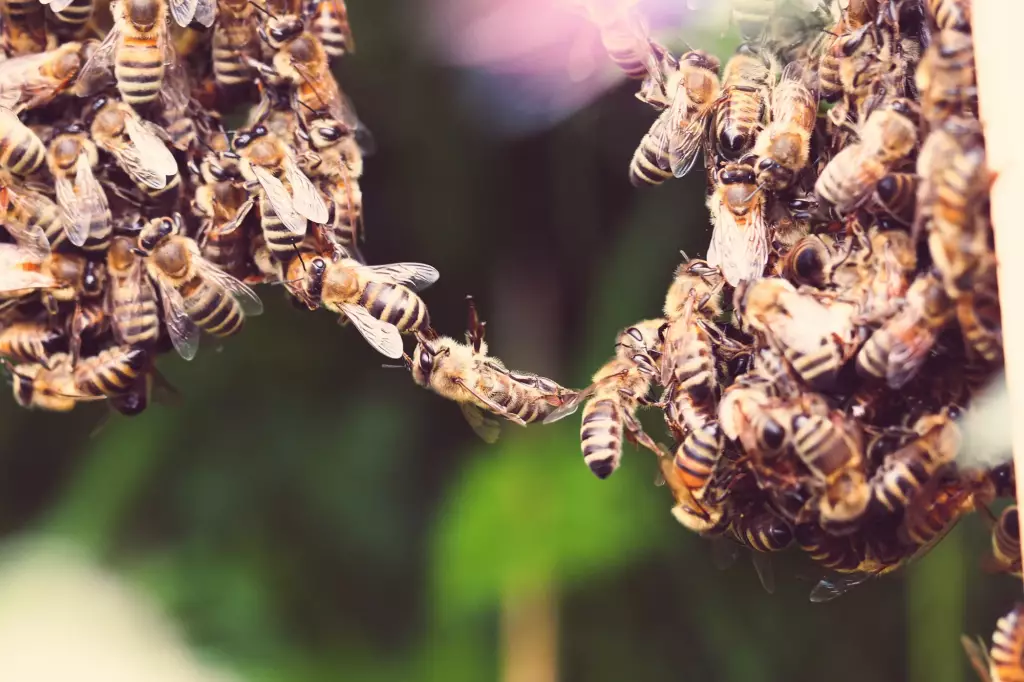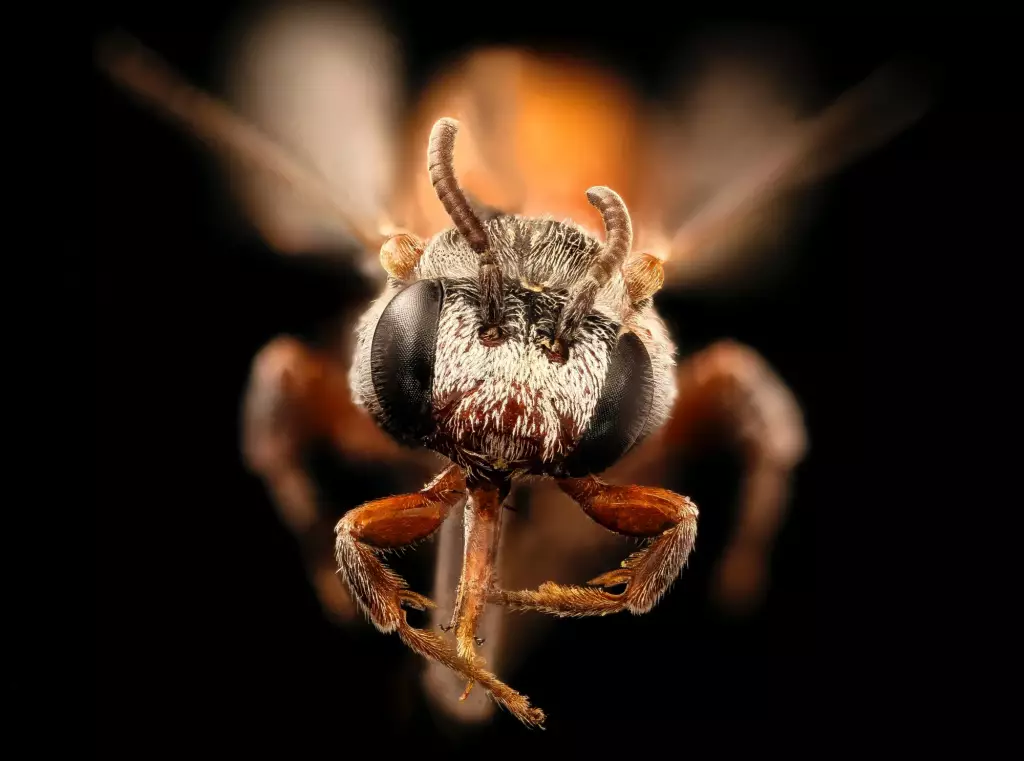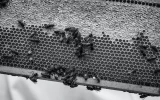What Do Lethargic Bees in Your House Mean?
If you've noticed lethargic bees in your house, you might be wondering what it means. Explore the possible causes and solutions to this issue, so you can take the necessary steps to help your bees get back to their healthy and active state.
Lethargic bees in your house may indicate that the bees are sick or injured. If the bees appear to be weak and disoriented, it is possible that they have been infected by a virus or parasite, or have been exposed to pesticides. Lethargic bees may also indicate they are swarming, meaning they are looking for a new home.
The sluggish bees in your home may indicate that a bee colony is present there. If this is the case, it is important to take action and contact a pest control professional to help you safely remove them.
Summary
- Lethargic bees can be caused by illness, environmental stressors, or nutritional inadequacies.
- Regularly inspecting the hives and using natural methods are some of the preventive measures for the causes of lethargic bees.
- Check for things like queen issues and hives size if there are lethargic bees in your house.

On this page:
Lethargic Bees in Your House
Lethargic bees are bees that have reduced activity or are showing signs of being overly tired or sluggish. Numerous things, including illness, environmental stressors, or nutritional inadequacies, can make bees lethargic.
In some cases, lethargic bees can be a sign of a more serious underlying condition that requires treatment. If you observe lethargic bees in your hive, it is important to take the necessary steps to identify and treat the underlying cause.
This may include consulting a beekeeper, who can assess the hive and recommend treatments or provide advice. If a beekeeper is not available, you should contact a local beekeeping association or other knowledgeable sources to help you identify the cause and provide appropriate treatment.

Common Causes of Lethargic Bees
Common causes of lethargic bees include Varroa mites, viruses, starvation, and pesticide exposure.
Varroa mites
Varroa mites are a species of mite that feeds on the blood of honeybees and other related insects. They are considered to be one of the main causes of Colony Collapse Disorder (CCD) in honeybees and have caused the widespread destruction of honeybee populations worldwide, with the United States being particularly hard hit.
Varroa mites attach themselves to the backs and abdomens of adult honeybees and feed on their hemolymph (the insect equivalent of blood). This can weaken the bees and make them more susceptible to other diseases and viruses. It also causes the bees to be lethargic, meaning they are less efficient at foraging and performing other duties in the hive.
The mites also reproduce very quickly, laying eggs inside the cells of the honeycomb, which can cause the cells to become deformed, making it difficult for the bees to build and store honey. This can further weaken the hive, leading to its eventual collapse.
To prevent the spread of Varroa mites, beekeepers must regularly inspect their hives and treat them with chemical miticides or natural methods such as essential oils or formic acid.
Viruses
One of the most common causes of bee decline is a type of virus known as the lethargic bee virus. The lethargic bee virus is a virus that affects honeybees and bumblebees. It is caused by a single-stranded RNA virus that is spread by contact between bees or by infected dust particles.
Infected bees will show signs of lethargy and uncoordinated movement, and may become unresponsive to stimuli. The virus can also cause paralysis and death in extreme cases. Infected bees may become more susceptible to other diseases, and their ability to pollinate and gather food may be affected. This can lead to colony collapse, where entire colonies of bees can disappear in a short amount of time.
As a result, bee populations can be decimated, leading to a decrease in pollination and a reduction in food production. To protect bee populations, it is important to control the spread of the virus.
Starvation
Starvation is one of the main causes of lethargic bees in apiaries. Bees are unable to forage for food when there are no flowers or nectar sources in the area and can become weak and lethargic due to a lack of energy.
A beekeeper should monitor the food stores in the hive and provide additional food sources for the bees if needed. If the bees are not able to find enough food in the hive, they may become weak and lethargic due to a lack of energy. The beekeeper may need to supplement the food supply with sugar syrup or pollen substitutes to ensure the bees have enough energy.
Starvation can also be caused by environmental factors such as drought or cold temperatures. A beekeeper should be aware of the environmental conditions and take steps to protect the bees from harsh weather. This can include providing shelter or supplemental food sources to ensure the bees have a reliable food source.
Additionally, the beekeeper should be aware of potential pests that could affect the food sources available to the bees. In general, beekeepers need to be aware of the potential causes of starvation and take steps to ensure their bees have access to enough food.
Pesticide exposure
Bees are essential pollinators in the environment, playing a key role in the growth of food crops and other plants. Unfortunately, bees are being exposed to increased levels of pesticides, which can have serious detrimental effects on their health. Pesticide exposure has been linked to a variety of health issues in bees, including lethargy, reduced reproduction, and even death.
The most common type of pesticide that is being used to treat crops is neonicotinoids, which are neurotoxins. When bees come into contact with these pesticides, they become lethargic and may even become paralyzed. The symptoms of lethargy are often seen in bees that are exposed to neonicotinoids, as the pesticide affects their nervous system.
In addition to neonicotinoids, other pesticides can also cause lethargy in bees. Many of these pesticides are also neurotoxins, which can cause the same type of effects as neonicotinoids. Some of these pesticides include pyrethroids, organophosphates, and carbamates. To protect bees from the effects of pesticide exposure, it is important to limit their exposure to pesticides as much as possible.

Things to Look Out For in Lethargic Bees
Observing the things that you should notice when there are lethargic bees in your house is a great way to secure your safety and the bees' as well.
1. Check the surrounding environment.
Are there any sources of stress or disruption that might be causing the bees to be lethargic, such as changes in temperature, light, or sound?
2. Check for signs of disease or infestation.
Is there any evidence of mites, wax moths, or other pests in the hive? Are any of the bees showing signs of disease, such as deformed wings?
3. Check for food and water availability.
Is there enough nectar and pollen for the bees to feed on? Is there a water source nearby for them to drink from?
4. Check for queen issues.
Is the queen present and laying eggs? Are the drones present and active?
5. Consider the hive size.
Is the hive overcrowded? If so, it could be causing the bees to become stressed and lethargic.
Lethargic bees in your house can be a sign of an infestation. If you think you have a bee problem, it's best to contact a beekeeper or pest control expert to investigate and take the appropriate measures to protect your home.

